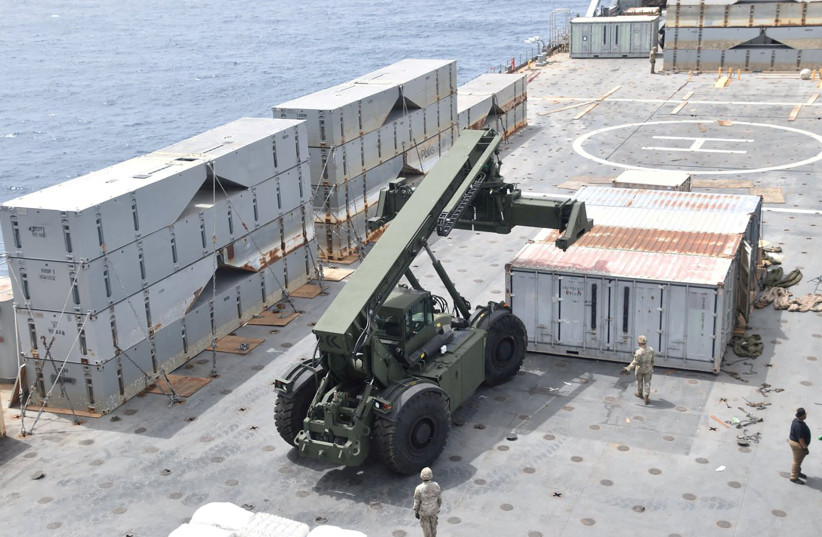The US Agency for International Development (USAID) is giving an additional $100 million dollars in humanitarian food assistance to Gaza and the West Bank, the organization’s administration Samantha Power announced during her three-day visit to Israel and the Palestinian territories that ended on Saturday.
The funds will support the World Food Program (WFP) which assists the Palestinians in the Gaza Strip and the West Bank. It is provided under the recently passed bipartisan National Security Supplemental, which allocates approximately $95 billion to counter Iranian, Russian, and Chinese influence against Israel, Ukraine, and Taiwan.
“The needs in Gaza are dire and every day that passes they grow more and more severe,” Power said during a visit to the Ashdod Port, where cargo is unloaded, placed on trucks and sent to the enclave via land routes. The pace of those shipments will increase, following the imminent shutdown of the US-built pier.
“I’ve had discussions here today… as to how we can expand the amount of assistance that flows through this important port,” she said as she stood alongside officials from the World Food Program, the Customs Authority, and the Port Authority.
“Nearly the entire population in Gaza is facing emergency levels of food insecurity and is in need of assistance, especially the most vulnerable, including children, pregnant and nursing women,” USAID said in a release about the funding. It will go towards food assistance and will also help “provide logistics support for the safe and efficient delivery of lifesaving humanitarian aid across Gaza amid a persistently challenging and insecure operating environment,” they said.
This marks the second round of funding for Gaza since the US suspended aid to UNRWA, the UN’s Palestinian-only refugee and social services agency, due to allegations that 12 of the organization’s staffers participated in the October 7 massacre. It brings the total humanitarian aid that the United States has announced for Palestinians since the start of the war to more than $774m., according to USAID.
Power's previous trips to Israel
Power, the US government’s top humanitarian aid official, last visited Israel in February. Her most recent visit, according to a separate USAID press release on July 11, was “part of ongoing efforts to get urgently needed humanitarian assistance to Palestinian civilians throughout Gaza.”
On Saturday, Power met with several Israeli officials, including those from the Coordination of Government Activities in the Territories (COGAT), the Israeli unit in the Defense Ministry that oversees aid deliveries to the Gaza Strip, and the Coordination and Liaison Administration (CLA), which operates under COGAT and is responsible for enforcing the Israeli government’s civilian policies regarding the Gaza Strip.
She also met with the US Central Command (CENTCOM), the IDF, and key humanitarian partners from the UN and NGOs to discuss the security issues surrounding humanitarian aid workers and the distribution of aid, amid “increasing lawlessness and the ongoing conflict between Israel and Hamas,” said USAID.
In a video posted on X she explained that she spoke to CENTCOM, the IDF, COGAT, CLA, and the UN about the importance of ensuring the safety of humanitarian aid workers along the maritime route from Cyprus to the US-built pier off the coast of Gaza, as well as maximizing modes of aid entry.
The actions “operationalizing a maritime route that has allowed more than 8,000 metric tons of emergency assistance to cross into Gaza” are important, she explained, “but in order to do that, [we need] to develop a mode of interaction and communication and cooperation that we think can be and must be scaled across Gaza.”
In an interview with the Associated Press on July 11, Power went into further detail about a recently secured agreement with the Israeli government and the IDF that will implement a “deconfliction” system across Gaza. This system, which involves the coordination of aid workers with the IDF, aims to protect aid workers and ensure their safety as they move “from point A to point B.” According to Power, this system has so far only been active in the maritime pier context but will now extend to “all of Gaza.”

